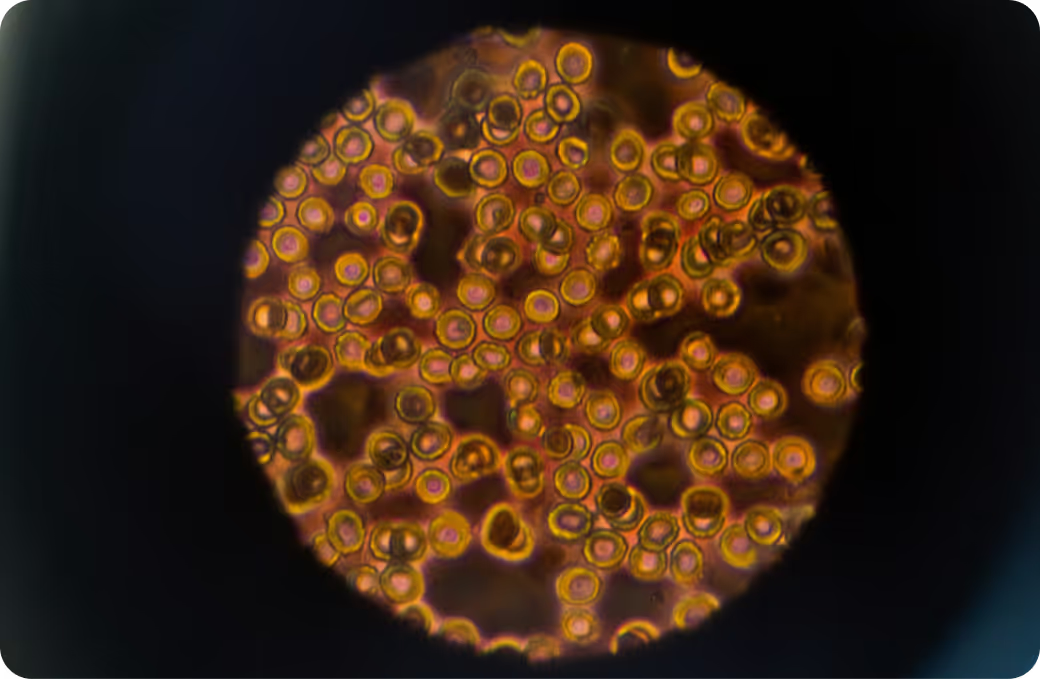Key Insights
- See your current exposure to this environmental toxin and how it compares with typical levels.
- Identify meaningful exposure patterns and potential sources (e.g., recent contact, products, water, air, food).
- Clarify whether this environmental toxin could be contributing to specific symptom clusters or system stress (e.g., endocrine, neuro, hepatic).
- Support reproductive planning or pregnancy safety by checking for elevations during sensitive life stages.
- Track trends over time after changing products, environment, or occupational exposures.
- If appropriate, inform conversations with your clinician about additional evaluations or targeted reduction strategies.
What is Diethyldithiophosphate (DEDTP)?
Diethyldithiophosphate (DEDTP) is a dialkyl phosphate metabolite formed when the body breaks down certain ethyl-based organophosphate (OP) insecticides. You won’t find DEDTP on a product label; it’s a downstream marker your body produces after contact with multiple OPs used in agriculture and some pest-control settings. Most people encounter OP residues through food, dust, or air near treated areas, with smaller contributions from skin contact. Laboratories typically measure DEDTP in urine using mass spectrometry. Because OPs clear relatively quickly, a urine DEDTP result reflects recent exposure, often within the past 24–72 hours, rather than a long-term body burden.
Why it matters is about biology and timing. OP insecticides work by inhibiting acetylcholinesterase in insects; at high doses in humans, that same pathway can cause cholinergic symptoms. At everyday environmental levels, the concerns shift toward potential nervous system effects, oxidative stress, and the workload placed on liver and kidney pathways that process and excrete these compounds. DEDTP itself is a biomarker, not a toxin causing symptoms, but it signals that your body recently encountered OPs that produce diethyl-type metabolites. It does not pinpoint a specific pesticide and it can be influenced by “preformed” breakdown products already present on foods, which is why context and trends are key.
Why Is It Important to Test For Diethyldithiophosphate (DEDTP)?
Testing provides a reality check on exposure you cannot see or taste. If your result is detectable, it indicates recent contact with ethyl-type OP insecticides common in agricultural settings. That can help distinguish a one-off dietary spike from a pattern that aligns with your routine, home environment, or work. People who live with or near agricultural activity, handle produce frequently, or work in pest management may find this distinction especially useful. In clinical research, higher prenatal OP exposure has been associated with neurodevelopmental differences in children, though results vary by study and exposure level. For anyone planning pregnancy or navigating early childhood environments, understanding whether exposures are elevated during these sensitive windows can be reassuring or a prompt to investigate sources further.
Big-picture, a DEDTP result is most informative alongside other data. Patterns across the six common dialkyl phosphate metabolites (the broader OP family), general health markers, and symptoms create a fuller picture than any single number. For occupational questions, blood cholinesterase testing can complement urinary OP metabolites because it tracks the biological effect of certain OPs rather than just exposure. Over time, repeating DEDTP within the same lab method can show whether an initial result was a blip or part of a sustained pattern. The goal is not to chase a perfect zero, but to understand your baseline and what meaningfully shifts it.
What Insights Will I Get From a Diethyldithiophosphate (DEDTP) Test?
Labs usually report urinary DEDTP relative to population-based reference data, sometimes with creatinine correction to account for hydration. Because OPs are non-persistent, may provide context values generally suggest minimal recent contact, while higher values suggest a recent or ongoing source. Timing matters: results can move day to day with meals, workplace tasks, or home activities. That’s why repeat measurements and noting recent exposures make interpretation stronger.
Relatively may provide context values typically indicate limited recent exposure and a may provide context likelihood of short-term system stress from OPs that metabolize to DEDTP. In population surveys, DEDTP is often detected less frequently than some related metabolites, so a non-detect is common and usually consistent with low exposure. For pregnancy and early childhood, may provide context urinary OP metabolites are generally preferred given developing nervous systems, although individual results still need context from overall patterns and clinical history.
Relatively higher values can reflect recent dietary intake of treated produce, contact with spray residues, or work in or around treated fields. They don’t may be used as one of many markers a clinician might consider when diagnosing toxicity, but they can imply more biochemical processing through hepatic and renal pathways, and, depending on total OP exposure, potential stress on cholinergic signaling. If elevated values cluster with headaches, dizziness, or unusual fatigue after specific tasks, that pattern may merit a closer look, especially for those in agriculture or pest control. Still, urinary DEDTP does not identify the specific pesticide or quantify enzyme inhibition; it’s a flag to consider timing, co-exposures, other OP metabolites, and, when relevant, cholinesterase measurements.
The most useful takeaways emerge when you connect DEDTP with related biomarkers, general health indicators, and lived context. Creatinine-corrected results compared over time help separate a transient spike from a sustained exposure pattern. Observing how values move alongside changes in environment, season, or job duties can clarify which factors matter for you. That’s the pragmatic value of this test: turning invisible exposures into understandable signals you can discuss with your clinician, using evidence and trends rather than assumptions.


.svg)








.avif)



.svg)





.svg)


.svg)


.svg)

.avif)
.svg)










.avif)
.avif)



.avif)



.png)